LG 47LW650T Review
LG 47LW650T
LG’s LW650T series is no longer the brand’s flagship 3D TV range, but the 47in 47LW650T still has plenty going for it - on paper at least...
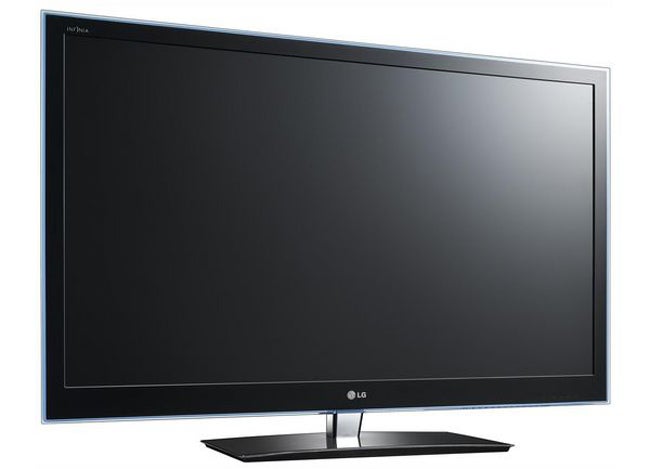
Verdict
Pros
- Pretty design
- 3D images suffer minimal crosstalk and no flicker
- 2D HD images sometimes look good too
Cons
- Heavy backlight inconsistency
- Traces of the 3D filter visible in 3D and 2D mode
- High levels of input lag
Key Specifications
- Review Price: £774.95
- 47in LCD TV with edge LED lighting
- Passive FPR 3D technology
- Smart TV functionality
- Extensive multimedia support
- Ships with 7 pairs of 3D glasses included
When LG burst out of the traps this year with the UK’s first ‘film pattern retarder’ (FPR) passive 3D TV, the 55in 55LW650T, we weren’t entirely convinced. There were some jagged edges and visible line structure on 3D and 2D images, and its backlight left some parts of supposedly uniform dark scenes looking brighter than others, to distracting effect.
The thing is, though, both these niggles on the 55in screen could be reduced by the smaller screen size of the 47LW650T. Indeed, a test of the 42in LG 42LW550T showed without question that LG’s new 3D technology really could deliver a brilliantly convenient, relaxing and fun alternative to active 3D on a more ‘manageable’ screen size while also achieving decent backlight uniformity.
So the arrival of the 47LW650T has got us genuinely intrigued. Will it prove a few inches too far for LG’s passive 3D technology, or will it show that 42in is not the outer limit of passive 3D’s appeal?
The 47LW650T certainly looks promising, thanks to its polished bezel; minimalist finish; glamorous stand; ‘see-through’ outer trim applied to all four of the TV’s sides; and the extremely slim depth of the panel, especially at its edges.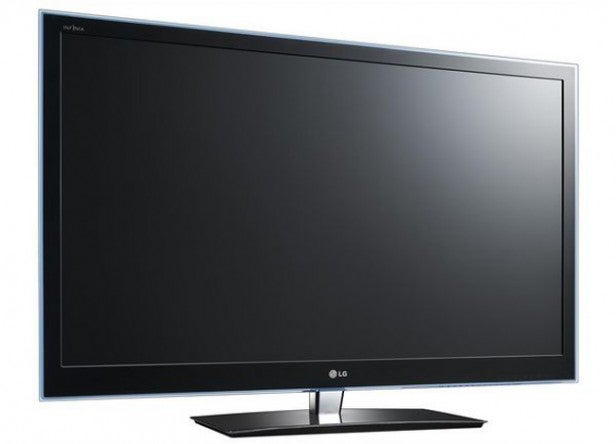
The 47LW650T’s connections are impressive for the most part, too. As with pretty much all mid-range and higher TVs these days the 47LW650T has, for instance, four HDMIs, all built to the 3D-friendly v1.4 specification.
The 47LW650T is also a pretty high-grade multimedia machine. So as well as the predictable VGA port, you get a pair of USB ports and a LAN port. The two USBs prove capable of playing back a really good selection of video, photo and music file types, including DivX HD, while the LAN allows wired access to either files on a networked DLNA PC or LG’s ever-improving Smart TV platform.
The only pity is that the 47LW650T doesn’t let you use its network options wirelessly unless you stump up extra cash for an optional USB wi-fi dongle. Surely this dongle should be included free with a TV so high up LG’s range these days – or better, wi-fi should really be built into such a high-end set’s main bodywork. Otherwise LG runs the very real risk of purchasers of its Smart TVs never using their key Smart TV features.
Which would be a shame, as over the past 6-8 months LG has transformed its Smart TV service from an ‘also-ran’ into one of the most content-rich and well-presented systems around.
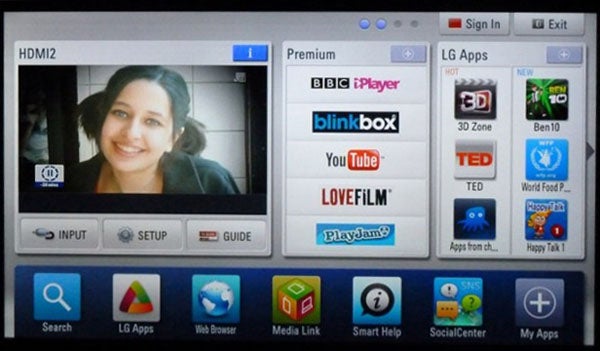
After not one but two long firmware updates to our 47LW650T review sample, a visit to the attractively designed and genuinely useful ‘Smart Hub’ screen – which now provides the jumping off point to all of LG’s multimedia, online and in-TV features and sources – revealed even more content than we found when we reviewed LG’s ‘Nano’ 55LW980T a few weeks ago.
Particularly of interest is the section of ‘Premium’ apps predominantly dedicated to video and social networking services. The full list of these now reads like this: the BBC iPlayer, LoveFilm, PlayJam, the Picture Box player, Museum PureScreens HD, You Tube, Blinkbox, Red Bull TV, cinetrailer.tv, ITN, Autocar, Skype, Facebook, Twitter, the Cartoon Network subscription channel, the HiT Entertainment subscription channel, Picasa, and Woomi.
Some of the newest additions may not be familiar to everyone, so briefly: PlayJam offers a selection of simple games (though during our tests we couldn’t access the service due to a ‘network error’); Red Bull TV is a channel providing access to news and mini-documentaries devoted to Red Bull-sponsored sporting events; the Picture Box player is a new subscription movie-on-demand download service; and Museum is an intriguing app that delivers painting exhibitions from famous museums in HD (at the time of writing, you could see for free galleries of Monet, Turner, and Rembrandt, among others).
While much of LG’s Premium content is now strong and the interface is extremely pretty, we’re still less impressed with both the reliability of LG’s servers right now, and the amount of second-tier and generally utterly trivial apps found in LG’s App Store.
Regarding the reliability, it took two days for the TV to decide to do the critical updates that added lots more online options to LG’s Smart TV offering. Prior to that, we hadn’t even been able to get the TV to automatically detect what country it was in – a fact which might have been responsible for the delay in downloading the two firmware updates.
We also experienced frequent frustrating ‘dropped’ connections or network errors when we tried to access some of the TV’s apps, even the premium ones. These sort of glitches are guaranteed to wind up/put off a typical TV user, and so LG needs to start fixing things up as we enter 2012. 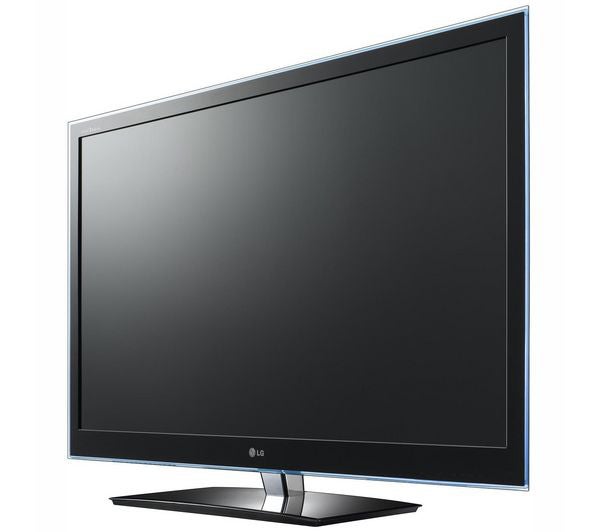
Powering the 47LW650T’s full HD-resolution screen is a processing engine capable of delivering an ‘850Hz Motion Clarity Index figure (to use LG’s own terminology), and locally dimmable edge LED lighting reckoned to produce a hefty contrast ratio of 9,000,000:1. The dimming comes courtesy of 16 separately controllable light ‘blocks’.
The set’s attractive set-up menus are packed with picture adjustments too, centred around colour balance, white balance and gamma controls as well as options for fine-tuning almost all elements of the TV’s processing engine. It’s no surprise that the 47LW650T comes with the full backing of the Imaging Science Foundation (ISF).
One final point to mention before finding out how the 47LW650T’s pictures stack up is that you can access the 47LW650T’s menus via one of LG’s cute ‘magic remotes’, which allow you to control the TV in a more ‘Wiimote’-style if you don’t feel comfortable with the normal remote.
So, the 47LW650T’s picture quality. Since the application of the 47LW650T’s FPR filter was raised earlier as a potential bone of contention, let’s immediately get stuck into that. On the downside, it is easily possible to see the effects of the filter during 2D and 3D viewing. With 2D, the edges of very bright objects look slightly stripey or ‘jagged’, especially at the shallowest parts of curves. And we could see this from a perfectly reasonable viewing distance; we didn’t have to stick our heads right up against the screen. However, the effect is predictably less obvious from a sensible viewing range than it was on the 55LW650T. 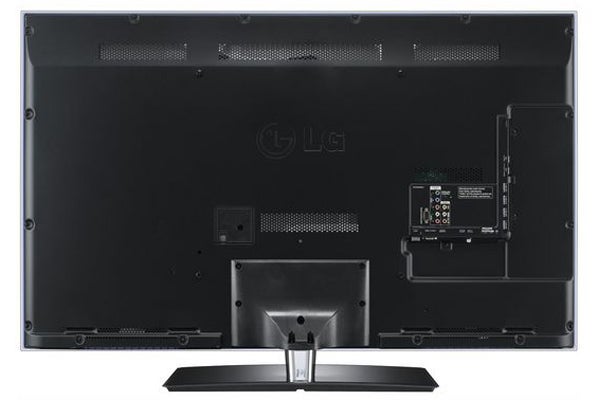
Even more importantly, only very rarely can you see on the 47LW650T the horizontal line structure of the filter lying right across bright image material like you could on the 55LW650T. So that’s a relief.
With 3D, the lines over bright edges and over small bright objects like the lanterns in Tangled’s notorious chapter 8 sequence are more apparent, and join with an occasional bit of shimmering noise over fine detail to sometimes give the 47LW650T’s passive 3D images a fractionally coarse look.
BUT! While the 47LW650T is large enough to expose – albeit only slightly – passive 3D’s flaws, it also showcases its strengths. Starting most powerfully with the almost complete absence of crosstalk from its pictures (unless you watch from above or below the screen). As 2011 has progressed we’ve become increasingly fed up with the double ghosting crosstalk problem on almost all active 3D TVs (bar Panasonic’s LCD and plasma models), so it comes as a lovely relief not to find 3D images plagued by it on the 47LW650T.
The fact that passive 3D technology doesn’t require you to wear glasses with shuttering mechanisms is also beneficial, for three reasons. First, it allows the 47LW650T’s 3D images to be much brighter – more than twice as bright, in fact – than those from similarly sized active 3D TVs.
Second, it means you tend to get less fatigued by a long-term passive viewing experience. Finally, if you’re watching in a bright room, you don’t have to put up with the lights in your room appearing to flicker from the effects of the shuttering glasses.
The 47LW650T rams home another huge passive advantage too: the cheapness of passive 3D glasses versus active ones. For as with all of LG’s ‘Cinema 3D’ TVs, the 47LW650T ships with seven pairs of glasses included for free, making 3D instantly watchable for your whole family and a few friends besides. Getting your hands on seven pairs of active shutter glasses could cost you over £500.
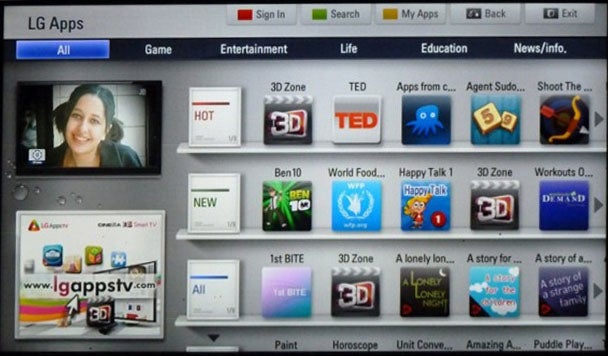
In short, while the passive 3D option is particularly enticing on slightly smaller screens where its downsides are less noticeable, even on the relatively large 47LW650T it still looks like a terrific 3D option overall.
Turning to other aspects of the 47LW650T’s picture performance, there’s some good news and some very bad news, alas.
Regarding the good news, HD pictures look superbly sharp for the most part, with lots of detail and clarity achieved without exaggerating potential source noise. Colours are exuberantly punchy and rich too; indeed, initially they’re a bit too strong for comfort. But the tools are there in the set up menus to get things calmed down to a much more natural level while still looking very dynamic.
The screen’s core black level response is pretty good too for an edge LED model, and the set’s natural response time seems fast enough to avoid serious blurring or heavy resolution loss, even without using LG’s TruMotion circuitry. There’s a bit of judder during 3D, but nothing truly serious. The TruMotion system can eliminate the judder, obviously, but we have to say that we found its results a little more glitchy than we’d have liked, especially with 3D.
Hopping over to the bad news, the biggest problem by far we have with the 47LW650T’s pictures is the way they fall prey to backlight inconsistencies. For unless you turn the backlight down to practically zero, dark scenes are routinely damaged by some of the most blatant backlight consistency flaws we’ve seen.
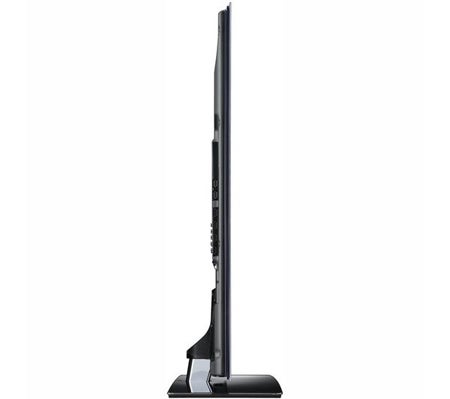
There are patches of strong extra brightness spreading in for a good few inches from each of the our test sample’s corners, especially the bottom ones, and really the image only looks consistently dark over around a third of its entire screen acreage. The problem is so obvious that it can all-but-ruin dark scenes at times, and there doesn’t appear to be any solution to it.
In attempting to work round this issue, we had a play with the Local Dimming system accessed via the TV’s menus. But if anything this made things worse rather than better, as you could clearly see rigid, straight-edged ‘blocks’ of extra luminance around bright objects when they appear against dark backgrounds.
A smaller concern finds the 47LW650T being a rather average upscaler of standard definition (leaving images looking a touch noisy and soft). And finally in the negative column, hardcore gamers will be disappointed to learn that we measured an average input lag of around 60ms, rising at times to 90ms – a figure that’s demonstrably capable of negatively affecting your gaming performance.
Wrapping up with the 47LW650T’s sound, it’s merely average. With fairly simple, one-dimensional audio of the sort sported by a typical TV programme, it’s good enough to allow vocals to sound believable and rounded. But under any sort of pressure from a typical movie soundtrack, bass noticeably vanishes, and the dynamic range stays disappointingly static and ‘small’.
Verdict
The 47LW650T is another frustrating model from LG’s oddly up and down 2011 range. For while it makes a very convincing case once more for LG’s passive 3D technology, and is capable of looking outstanding with the right sort of 2D material, severe backlight uniformity issues during dark scenes and some inconsistent and occasionally very high input lag make it tough to recommend to serious movie fans and gamers respectively.
How we test televisions
We test every TV we review thoroughly over an extended period of time. We use industry standard tests to compare features properly. We’ll always tell you what we find. We never, ever, accept money to review a product.
Trusted Score
Score in detail
-
Features 9
-
3D Quality 8
-
Value 9
-
Design 9
-
2D Quality 6
-
Sound Quality 6
Features
| Size (Inch) | 47in |
| Display Type | LED |
| Max. Resolution | 1920 x 1080 |
| Full HD 1080p | Yes |
| Digital Tuner | Yes |
| Freeview HD | Yes |
| 3D Ready | Yes |
| Contrast Ratio | 9,000,000:1 |
| Refresh Rate (Hertz) | '850'Hz |
Connectivity
| HDMI | 4 (v1.4) |
| Component | 1 |
| Composite | 1 |
| Scart | 1 (RGB) |
| Digital Audio Out | 1 (optical) |
| Headphone | 1 |
| Charging/Computer Connection | 2 (2.0) |
| Ethernet | Yes |
| WiFi | Yes (via optional dongle) |
Physical Specifications
| Height (Millimeter) | 684mm |
| Width (Millimeter) | 1119mm |
| Depth (Millimeter) | 29.9mm |
| Weight (Gram) | 18.2g |

